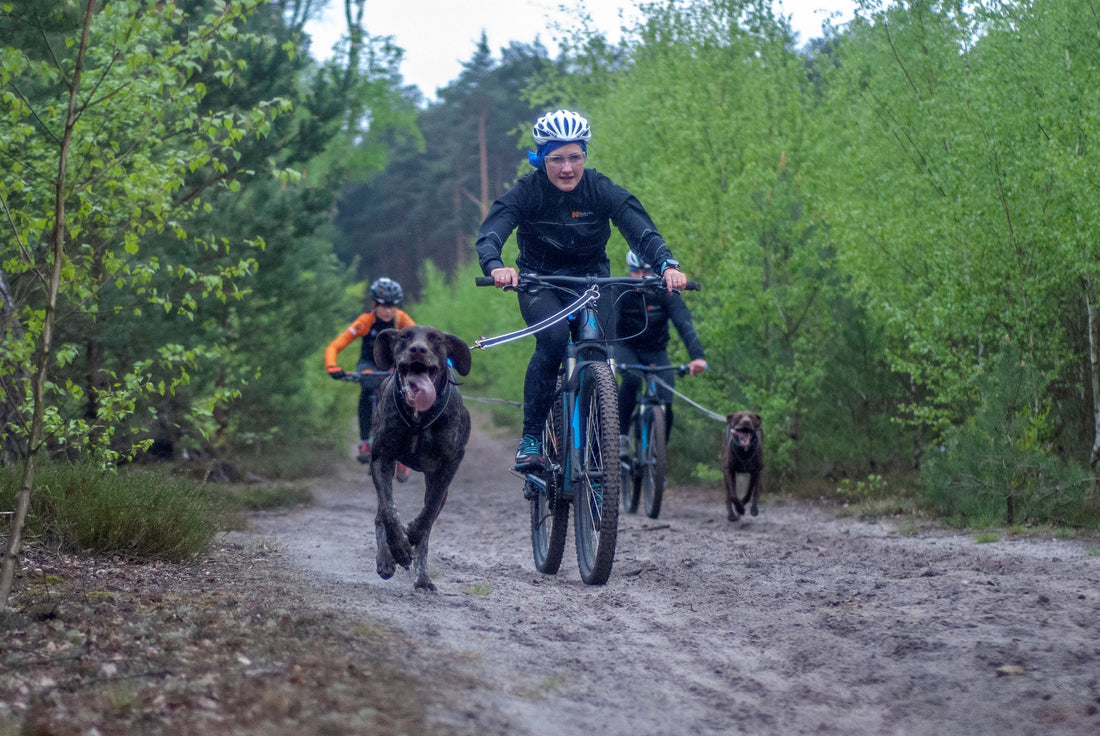
If you want to be good at canicross, train bikejoring too!
Share
Elite canicross athletes Julita Łubianka from Poland and Alberto Alda from Spain spend more time biking with their dogs than running with them.
When preparing for competition season, Julita is only running with her dog once a week - maximum!
- That is enough for my legs to stay quite fresh after a competition. You need to train canicross to prepare your body for this type of effort. The running pace is much higher than when running alone!
Tough sport
- Running with a dog is hard on your body. Canicross training puts a strain on your joints, especially if you have a big dog that is pulling hard! If you want to be good at canicross, don't train canicross only with your dog, says Julita.
Bikejoring is not only ideal for the human part of the team. It is also excellent training for your dog's speed and strength.
Building strength
In pre-season, Alberto uses bikejoring to build strength.
- I use my brakes a lot so that my dogs have to work with more power.
Read also: How resistance training can benefit your dog
The first strength training sessions in bikejoring are short and with enough breaks for the dogs to recover well.
- Little by little, I increase the distance and take fewer breaks.
According to Julita, this strength training is both effective and great fun for the dogs.
- We do two strength-sessions during the week - canicross and bike or scooter using the brakes.
High speed
Closer to competition season, Alberto uses bikejoring workouts to build speed.
- At this stage, I do not use the brakes. Sometimes I help with the bike so that the dogs can run at their maximum speed. Bikejoring is very motivating for our dogs because they love to run fast!
Read also: How to train like the fastest canicross duo on Earth
Julita has the same experience. She does one bikejoring session a week with full help.
- For the fourth training session, I do on bike or scooter with no help. I sit still or stand.
Intervals
You can also vary within each training session.
- The easier parts of the trail you can use for speed training, in more challenging parts, you can brake to train strength. I think it is nice to do some variety. I can, for example, do three training sessions with 3x3 minutes and one minute break. For another session, I do all nine minutes at once.
Minutes, not distance
- Train your dog for minutes, not for a distance. If you want to cover the distance at competitions in 10 minutes, prepare your dog for 10 minutes of work. Start with a shorter time and increase gradually, Julita says.
Warm-up
Always remember to warm up both yourself and your dog before each session. Alberto likes to start with a walk and a massage to activate his dogs' muscles.
Read also: How to warm up and cool down your dog for canicross and bikejoring
- Don't forget to hydrate well when you finish the training and to do a progressive cooldown before finish the workout. These details can prevent injuries and speed up the recovery of your dogs to be ready for the next training together, Alberto says.
Both Julita and Alberto are members of the Non-stop dogwear International CaniX team. In 2019 Julita won the ICF European championship in canicross and placed 3rd at the IFSS World Championships. Alberto placed 5th at the IFSS European championship in 2018 and won Vulcanicross in 2019.





